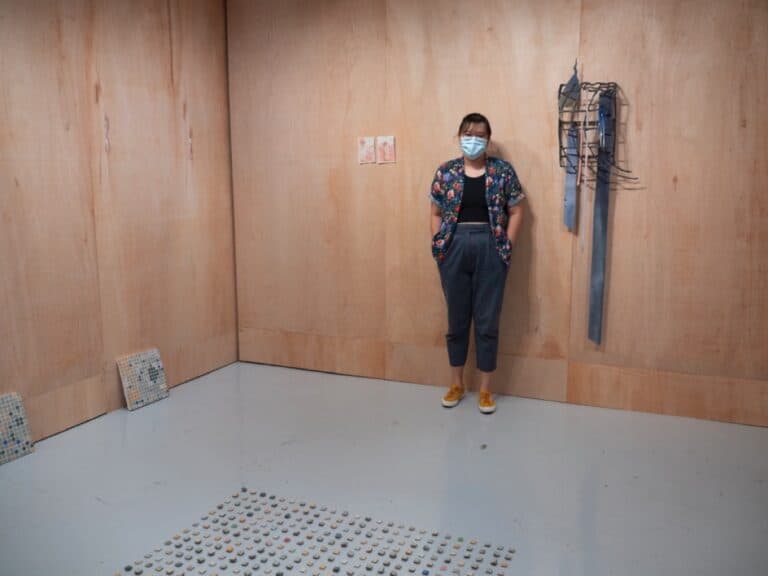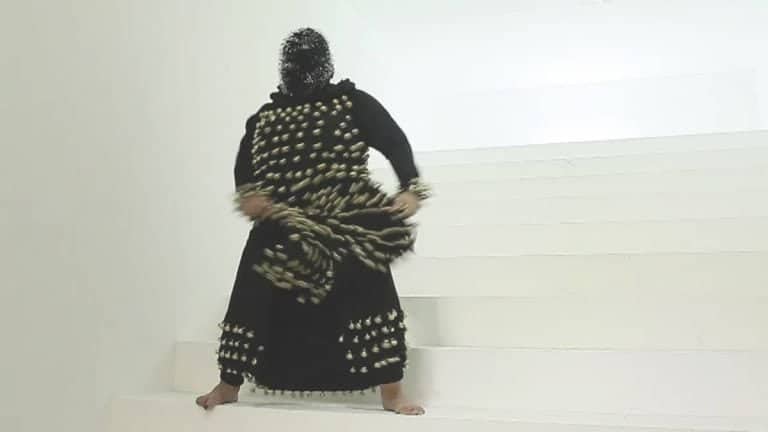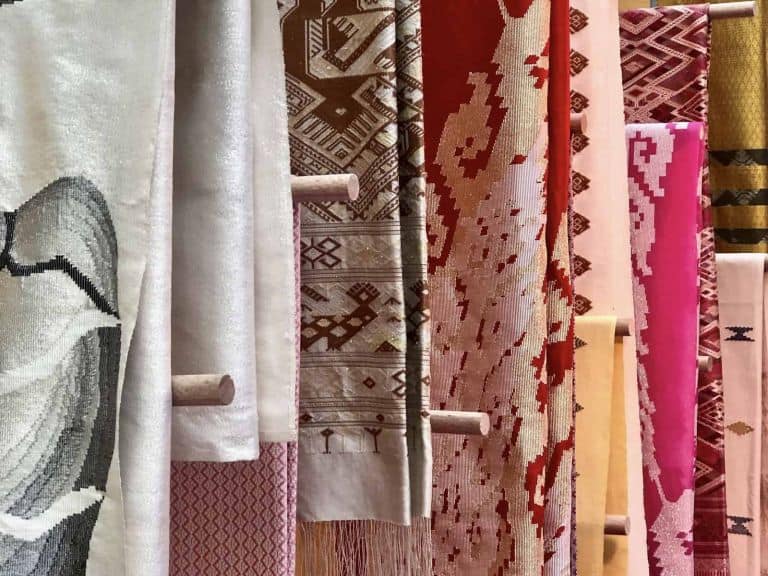Vietnamese visual artist Moi Tran proclaims, “Voice is now. Voice is legacy. Voice is acoustic selfhood.” Through her various projects, she advocates for the voice of the diaspora and examines how voice shapes identity.
Who is Moi Tran?
I first learnt of Moi Tran’s work in 2019, through her performance titled The Bolero Effect, which she had staged in an old French house in Hanoi and performed by a local community ensemble of untrained performers. The play incorporated Vietnamese ‘Bolero’ music, a style of music that had been popularised in Vietnam in the 1950s, and used it to examine the complex transnational identity of the Vietnamese diasporas and homeland.
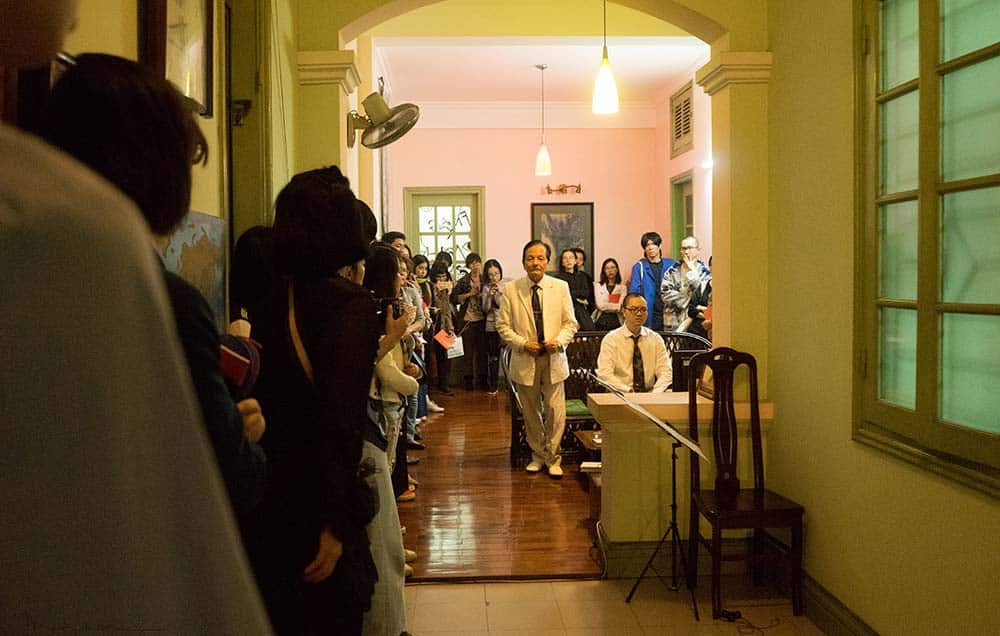
As a Vietnamese artist born and raised in Hanoi, I was impressed by how Moi Tran, a Vietnamese person who had spent their formative years on the other side of the world, was able to capture Vietnamese history and its political discontents by combining performance and voice.
Born in Vietnam and descended from Chinese heritage, Moi Tran’s family were exiled from Vietnam in the late 1970s, on a fishing boat via Hong Kong to the UK. The years of violent war between the Vietnamese Communist and the Americans had left the country ravaged. Vietnam, scarred by bombs, landmines and political unrest, saw the mass exodus of Vietnamese citizens. The seas were suddenly filled with refugees, the so-called “boat people”. Tran’s family, a part of this refugee history, is a slice of the tragedy left over from what Louis Ho referred to as one of ‘Southeast Asia’s most traumatic Cold Wars.’
Having left a country that was once a colony only to grow up as a migrant in another country with its own unresolved colonial history left its mark on the artist. Tran became increasingly aware of the lives of the diaspora community around her.
Recurring in Tran’s work are themes of displacement, alienation, unbelonging and shame that people of the diaspora community face. Tran’s works explore the use of music and song as “a process of repair, a political intervention, a site for resistance and contest, a mechanism for communication… [and] a document of social solidarity and conflict”.
Bolero as a marker of Vietnamese identity
Tran returned to Vietnam in 2019 to create the performance The Bolero Effect. It was here that she met the 75-year-old activist and Bolero (a.k.a yellow music, or Nhạc vàng) singer Lộc Vàng, who was imprisoned for 10 years for singing Bolero. He would go on to become a recurring figure in her works.
Before returning to the UK, Lộc Vàng gifted Tran a copy of his memoir Cung Đàn Số Phận, which was published in 2018 which was then immediately banned from public sale in Vietnam.
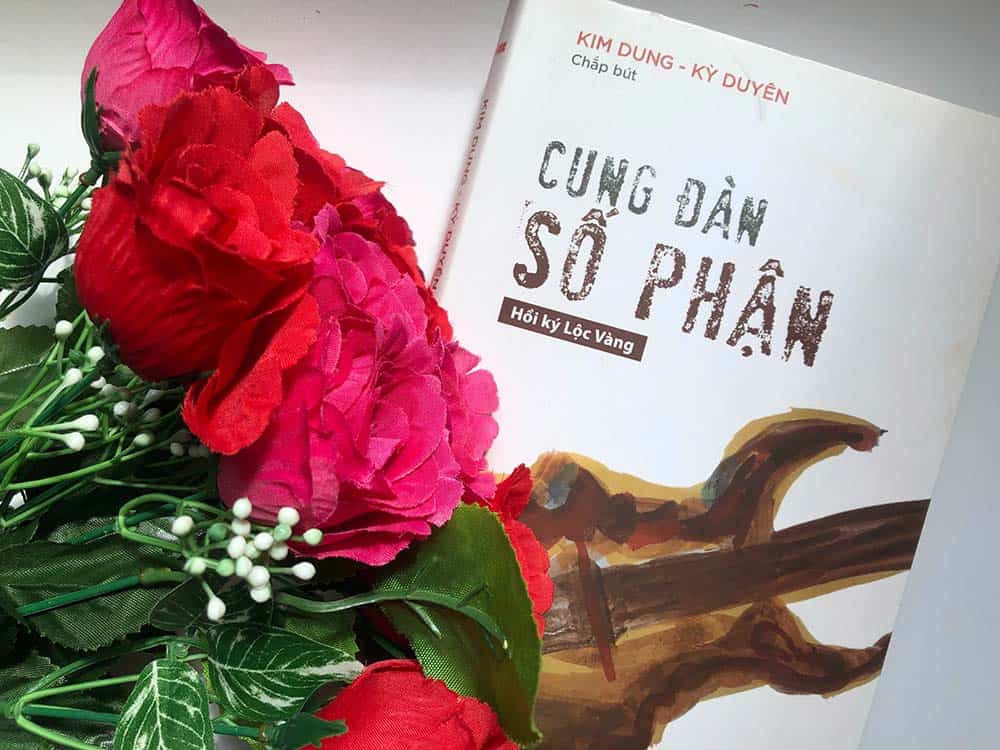
Tran was fascinated by Lộc Vàng’s life story, which she saw as resonant to her research on the diaspora community. Like him, many individuals put their lives on the line for human rights. They are the ones who do important work yet remain invisible.
What does it mean to feel a voice?
Tran used the book as a backbone for a performance titled Shy God Chapter Một, the first in her series of Shy God works which are inspired by Vietnamese folklore. Tran co-curated the performance as a part of Encounter Bow at the Chisenhale Dance Space, East London in July 2021.
The Shy God series explores what Tran calls Events of Sonic Witnessing – performative acts that invite the audience to keenly feel the resonance of participant’s voices and in doing so witness their experiences. In Tran’s own words, “Voice is an embodiment of communality; embedded at the heart of this work is the emotional reckoning in experiences of ‘Sonic Witnessing’ in events of the voice.”
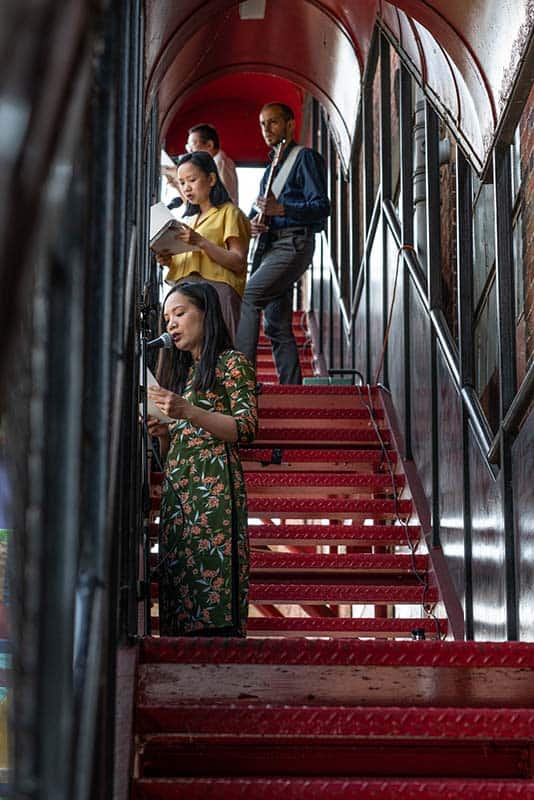
A travelling chorus of diverse voices
The next iteration in this series of work is titled Shy God – A Community Chorus. This October, Tran will be gathering 20 people from a diverse group of community performers to choose songs in their first languages and create a ‘community chorus’. The choice of singing in the performers’ mother tongues rather than English provides a rare alternative to the prevailing hostile narratives of migration and refugees – here, members are invited to pay homage to their own cultures and languages rather than being forced to conform.
By taking place in multiple locations in Ipswich, England as part of the SPILL festival, the chorus will incorporate the act of travel and journey as a means of referencing the nature of the diaspora as a migrant entity.
Members will sing in at least 10 different languages and dialects, and in doing so explore how the unique grain of our voices reveal the aspects of our identities. “The performance will celebrate the unruly spaces of co-existing sounds, a cacophony of dissonant noise orbiting a harmonious space of co- existing,” says Tran.
Knowledge that resides in the margins
In June 2021, she launched her first solo exhibition with more than 10 artworks and installations at Yeo Workshop, Singapore. The name of the exhibition, I Love a Broad Margin to My Life, is inspired by a book of the same name from Maxine Hong Kingston, a Chinese American writer.
Tran explains that she is most interested in how knowledge is formed through emotional catalysis, in these ‘spaces in the margins’. She finds this to be particularly true of diaspora communities. Referencing bell hooks’ essay, Choosing the Margin as a Space of Radical Openness, to clarify her point of view, she says, “I am interested in how we might reconfigure our understanding of what constitutes ‘knowledge’.”
“Marginality [is] much more than a site of deprivation… it is also the site of radical possibility, a space of resistance… As such I was not speaking of a marginality one wishes to lose – to give up or surrender as part of moving into the centre – but rather as a site one stays in, clings to even because it nourishes one’s capacity to resist. It offers to one the possibility of radical perspective from which to see and create, to imagine alternatives, new worlds.”
bell hooks, Choosing the Margin as a Space of Radical Openness.
By this, Tran refers to how much of knowledge as we know it lays within the margins of mainstream, white-dominated spaces and institutions. Her knowledge about her history, her country and her family could only come from accepting and embracing her own emotions and reclaiming her identity and narrative. It was knowledge that she hopes could eventually touch other communities, through thoughtful dissemination.
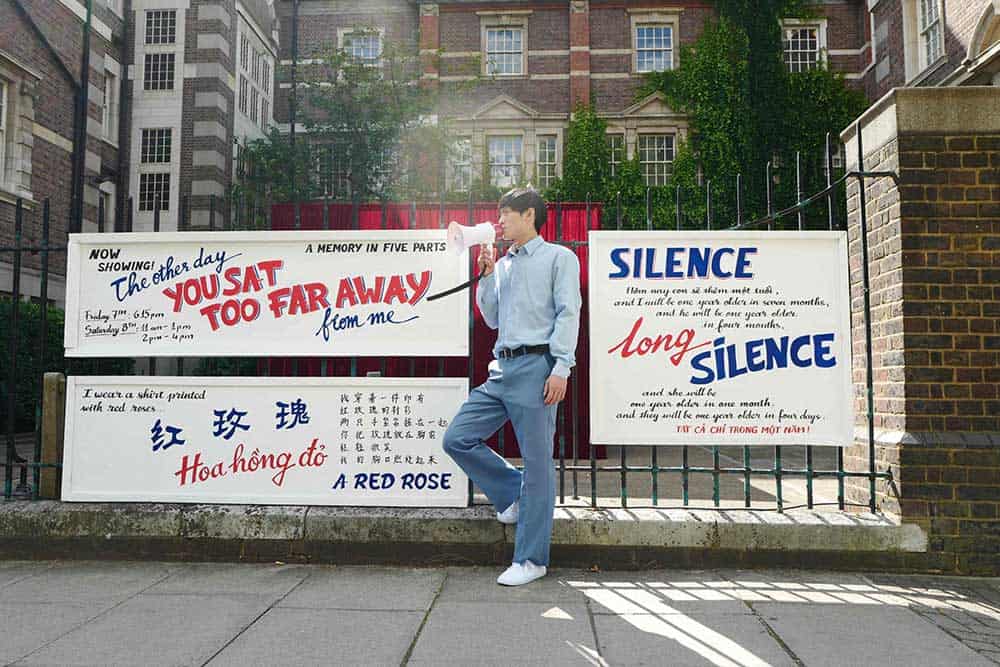
Sadness as knowledge
It appears that, for Tran, an element of this ‘knowledge’ that the artist discusses, is sadness. In some instances, this might be called grief. Tran discusses this in a research paper titled Reconfiguring the Value of Sadness that she wrote in 2018, which accompanies I Love a Broad Margin to My Life.
The paper opens with an image of Tran’s late father in 1982, sporting a dusty pink shirt and a youthful grown out mop-top. The sadness is perhaps from his passing, though also for the humanitarian disaster that followed the war in Vietnam – the lives lost at sea, the women raped, the families separated.
In her research, Tran proposes removing the inherent notions of sadness, to de-stigmatise the suffering of others: “To share Sadness is not an attempt to cause a nihilistic sense of desperation/depression, but to take power, become aware, share fundamental collective consciousness and empower communities who have experienced histories of loss, displacement and dispossession to take agency,” writes Tran.
In an attempt to embody this philosophy, Tran staged a performance piece, The Other Day You Sat Too Far Away From Me / A Memory in Five Parts, which was presented at the Henry Moore Courtyard in London in 2018. Conceptualised as a ritualistic lament of the loss of Tran’s father, the work was conceived as a moment of emotional reckoning.
In looking for performers for this work, Tran sought participants whom she felt could understand and share in her grief, perhaps through their own personal experiences. The performance, though staged, left plenty of room for actors and audience members alike to explore the site, interact with one another, and create a sense of bonding through their shared grief.
A soundscape of percussive ticking and poems performed in Vietnamese, Mandarin and English accompanied the video. To me, the voices in the video appeared as though they sought empathetic connection with the viewer.
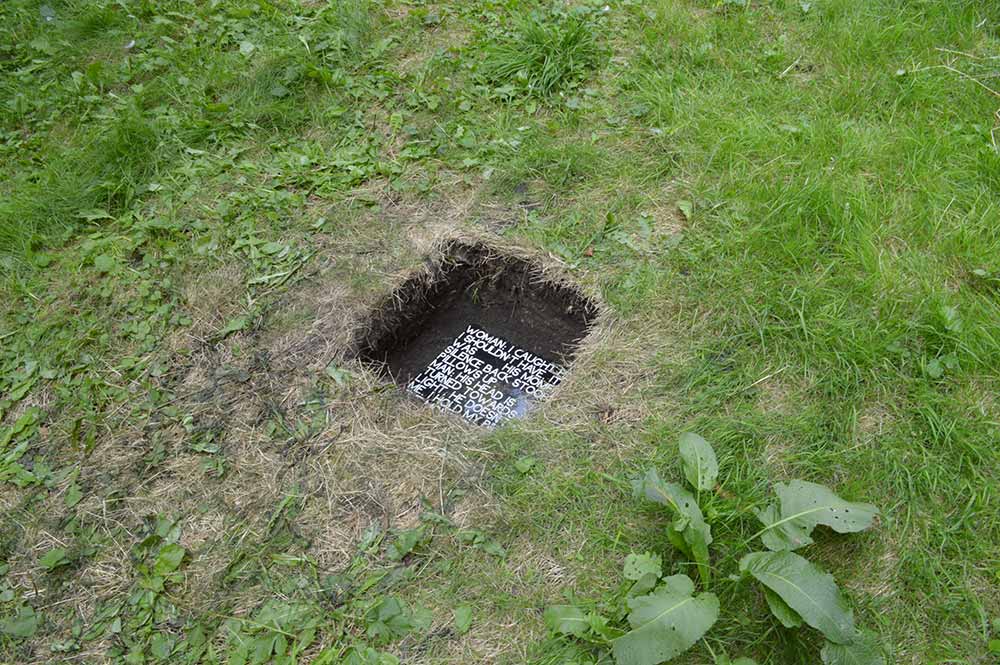
Continuing her research into sadness, Tran created a series of marble tiles called Dying – A Journey in 2019, which were displayed on the exhibition wall at Yeo Workshop. Etched into each tile is a poem inspired by conversations and observations about dying by members of migrant communities, to memorialise their words. This act of memorialising provided significance to what they thought were inconsequential chats.
Tran then took the tiles on trips. On one occasion, she asked permission from a friend if she could bury a tile in her garden. In another, she took them on a 6-hour walk across Seven Sisters cliffs in Seaford, England, a ritual she does every year as a form of rejuvenation. She was, literally, carrying her words, narrative, history and the grief of her late father.
Breaking the traditional framework of archiving
Recently, Tran has been working with contributors in the Philippines, Vietnam, and the UK. Each of them has recorded video performances in their own native language for her upcoming project Civic Voice Archive. The idea is to present a sustained, impactful act of resistance for people in vulnerable communities, contributing actively and safely to an acoustic repository of lived experience.
Civic Voice Archive aims to break the traditional framework of archiving, which traditionally relies on text and documents. “I have started to think of an archive as a ‘carrier bag’,” says Tran, relying on voice as an archiving tool such that it becomes a vessel for alternative narratives, imagination, and possibilities.
The project is like an ‘in-between’ space of resistance, where alternative protests exist and are acknowledged. Contributions that Tran has received so far include folk songs that have only been passed down through oral teaching, original protest poems, as well as a touching duet sung by a young mother and her daughter.
Tran shares that the project will span the next five years of her practice. She hopes to challenge the conventional use and narrative of the archive. “I imagine it to be open access and continuously open to new contributions. It will be a Live and Living Archive.” says Tran.
“Nothing gives us such an incisive and poignant sense of presence as hearing and emitting a voice.” says Tran. Her research-based and free-ranging imagination in using the human voice as the tool of resistance and emotional expression makes her works an open space for creative curiosity, and a public space for caring and sharing.
___________________________________
Find out more about Moi Tran’s practice via her website.
Feature image: Portrait of the artist Moi Tran. Image courtesy of the artist. Credit Amit & Naroop







